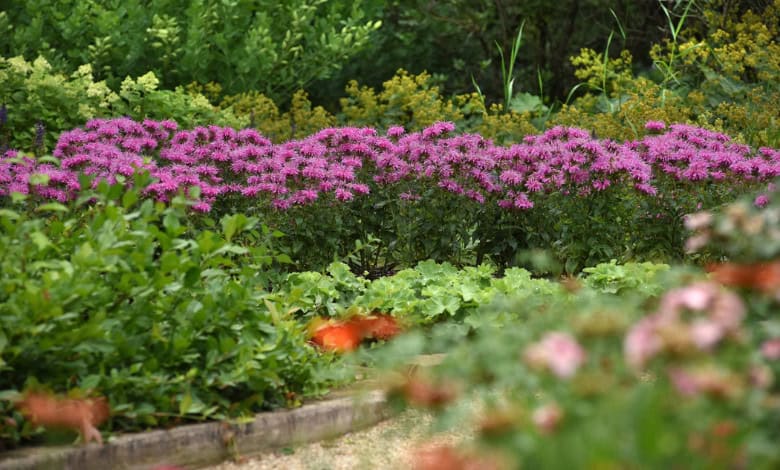Entertainment
Perennial charm

When garden guru’s talk about sustainable gardening, which is this year’s top trend, what they are talking about are water wise, heat tolerant plants that contribute to a healthy environment by attracting butterflies, bees and other beneficial garden insects.
Perennial flowers also tick all the boxes as low maintenance plants that together with shrubs and trees provide the basic framework of the garden.
Most perennials survive drought, even during the first few weeks of their growth and, once in place, will happily grow for three or four years in ordinary garden soil before they need to be lifted and divided. They are also excellent in containers for the patio and as accents or focal points in the garden.
What’s to like about perennials
Perennials are perfect for flower beds and borders, cottage and informal gardens, Prairie planting, and wildlife gardens.
Group perennials in uneven numbers, such as three, five or seven, so that they create triangles and form a clump. Repeating groups of perennials throughout the bed or throughout the garden adds to the impact.
Use perennials to add splashes of colour in a predominantly foliage garden.
New varieties to look out for in spring
Salvia nemorosa ‘Sensation
Salvia nemorosa ‘Sensation’ is a dwarf bedding salvia that sends up a mass purple blue or rose pink flowering spikes to stop you in your tracks. The dense flowering spikes stand upright above the aromatic grey-green leaves, making a neat border. Also, excellent in containers.
This clump forming perennial is heat and drought tolerant once established. Plants grow best in sun but can tolerate partial shade.
Salvia nemorosa ‘Marvel’
‘Marvel’ (aptly named) has the largest flowers for this salvia type. The available flower colours are rose pink or blue with a white lip, which was voted Best on Show by the Royal Horticultural Society in the UK.
This sturdy dwarf salvia is a dependable grower that flowers from spring through to autumn and not only attracts bees and butterflies, but nectar seeking birds as well.
Plants do best in full sun, with some partial afternoon shade. Fertilise once a month for good growth and flowering and water moderately. Pinch off the dead flower heads to encourage more flowers.
Achillea Milly Rock
This old-fashioned cottage flower mixes well with everything. The bright red, yellow or terracotta yellow flower heads rise above wispy fern-like foliage.
Plants are more compact than the traditional achillea and don’t fall open, keeping their mounded shape.
Plant in a sunny bed, in soil that drains well and fertilise once a month in summer. Cut off the dead flower heads to encourage more flowers through to autumn. Water well during the first year of growth to prevent aphids and powdery mildew, especially in very hot weather. Plants are drought tolerant once established. Pollinator friendly too.
Monarda didyma BeeMine
The shaggy, multi-petalled blooms drive the bees crazy. Its common name is Bee Balm and it’s also known as Bergamot. Besides being a gorgeous garden flower it’s a good companion plant because the aromatic leaves repel pests, especially mosquitoes if you rub the leaves on your skin.
BeeMine grows into a medium-sized plant, 38 to 46cm high and wide. Plant in full sun or partial shade in soil that drains well. It’s a quick grower that forms clumps that can be divided every three or four years. Mulch around the roots, fertilise once a month during summer and keep it flowering by cutting off the dead flowers.
Penstemon hartwegii Polaris
This long flowering perennial produces a profusion of tubular bell-shaped flowers. Very showy, especially in containers. It grows in full sun and works well with plants that have similar growing requirements like achillea, echinacea, lavender, and salvia.
Plants grow 46cm high and wide and are















